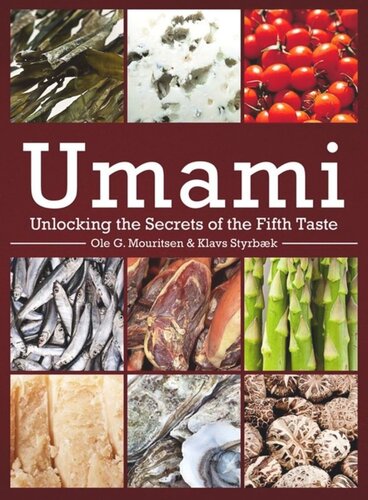

Most ebook files are in PDF format, so you can easily read them using various software such as Foxit Reader or directly on the Google Chrome browser.
Some ebook files are released by publishers in other formats such as .awz, .mobi, .epub, .fb2, etc. You may need to install specific software to read these formats on mobile/PC, such as Calibre.
Please read the tutorial at this link: https://ebookbell.com/faq
We offer FREE conversion to the popular formats you request; however, this may take some time. Therefore, right after payment, please email us, and we will try to provide the service as quickly as possible.
For some exceptional file formats or broken links (if any), please refrain from opening any disputes. Instead, email us first, and we will try to assist within a maximum of 6 hours.
EbookBell Team

4.8
44 reviewsIn the West, we have identified four basic tastes—sour, sweet, salty, and bitter—that, through skillful combination and technique, create delicious foods. Yet in many parts of East Asia over the past century, a fifth taste—umami—has entered the culinary lexicon. Umami is savory, complex, and wholly distinct. Combining culinary history with research into the chemistry, preparation, nutrition, and culture of food, this book encapsulates what we know to date about the concept of umami which, when harnessed, enables us to become more intimate with the subtleties of human taste and make better food choices for ourselves and our families.
In the West, we have identified four basic tastes—sour, sweet, salty, and bitter—that, through skillful combination and technique, create delicious foods. Yet in many parts of East Asia over the past century, a fifth taste—umami—has entered the culinary lexicon. Umami is savory, complex, and wholly distinct. Combining culinary history with research into the chemistry, preparation, nutrition, and culture of food, this book encapsulates what we know to date about the concept of umami, which when harnessed enables us to become more intimate with the subtleties of human taste and to make better food choices for ourselves and our families. The product of an ongoing collaboration between a chef and a scientist, this book has won the Danish national Mad+Medier–Prisen (Food and Media Award) for academic food communication and the Gourmand World Cookbook Award for Best Translation Cookbook for the United States.
The West identifies four basic tastes—sour, sweet, salty, and bitter. Yet in East Asia, a fifth taste—umami—has entered the culinary lexicon. Umami is savory, complex, and wholly distinct. Combining culinary history with research into the chemistry, preparation, nutrition, and culture of food, this book encapsulates the concept of umami.